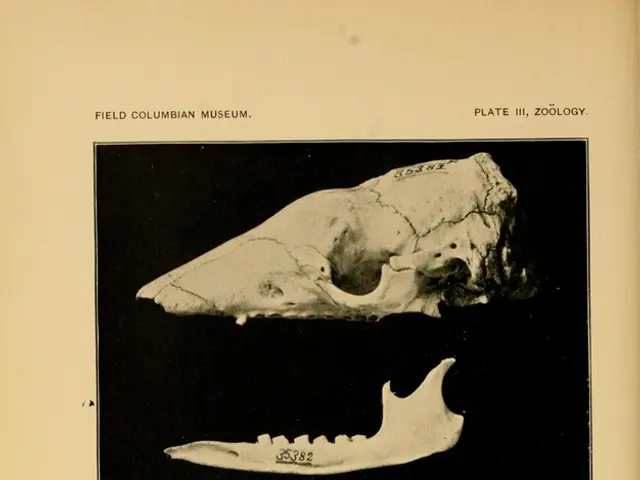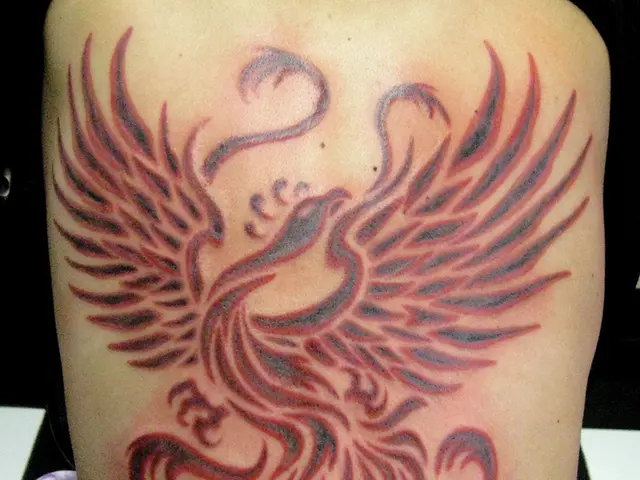Distinguishing age spots from skin cancer: A guide on recognizing the variations
Let's Chat about Age Spots vs Skin Cancer
Hey there! Ready to learn the difference between those pesky spots on your skin? Age spots and skin cancer - both can look alarmingly similar, but there are some key differences to keep an eye out for.
Age spots, also known as solar lentigines or liver spots, show up as small, darker patches on your skin. Unlike skin cancer, these little dudes are usually harmless and don't need any special treatment. Age spots develop as the body pumps out extra melanin to protect the skin from the sun's harmful UV radiation. They're common on fair skin, although they can pop up on any skin tone, and tend to appear after middle age.
Skin cancer, on the other hand, is a type of cancer. While age spots are most likely to appear in sun-exposed areas, skin cancer doesn't discriminate - it can show up anywhere on your body, even in less sunny spots. Skin cancer happens due to damage from UV radiation (sun or tanning beds) or other environmental or genetic factors. The damage causes skin cells to go rogue, growing and spreading rapidly. Skin cancer is harmful and can potentially spread throughout the body.
The two most common types of skin cancer are basal cell carcinoma and squamous cell carcinoma, while the deadliest is melanoma. Another mark that might fool you is actinic keratosis, a precancerous growth caused by UV radiation damage.
But hey, don't panic! While it's important to keep an eye on new or changing marks on your skin, age spots can't transform into cancer. And with early detection, skin cancer is more easily treated.
So, how can you tell these spots apart? Age spots are usually flat, smooth, and defined with clear borders. They come in shades of yellow, brown, or gray. Skin cancer symptoms can be trickier, varying depending on factors like the type of cancer, but common signs include asymmetry, changing size or color, and irregular edges. Actinic keratosis may appear as raised, rough, or scaly patches, or as flat, scaly spots that look similar to age spots.
If you notice any weird, new, or concerning spots, it's always a good idea to consult with a healthcare professional. They'll be able to examine the spot and determine whether it's an age spot, actinic keratosis, or something more serious. And remember, prevention is key when it comes to skin cancer - protect your skin from the sun with sunscreen, clothes, andshades.
Stay safe and keep that skin glowing!
Additional Facts:- Age Spots: Age spots are more common in people with lighter complexions[5].- Skin Cancer: Skin cancer kills more than 15,000 people annually in the United States[1].- Prevention: It's essential to protect your skin from the sun, especially between 10 a.m. and 4 p.m., as the sun's rays are the strongest during these hours[2].- Warning Signs: Anyone can get skin cancer, but fair-skinned folks with blonde or red hair, a history of sunburns, and a family history of skin cancer are at higher risk[5].- Sources: 1. American Cancer Society. (2021, February 11). Skin Cancer. www.cancer.org. 2. SkinCancer.org. (n.d.). Cancer Prevention and Early Detection Fact Sheet. www.skincancer.org. 3. NCBI. (n.d.). Melanoma. www.ncbi.nlm.nih.gov. 4. Cleveland Clinic. (2020, January 7). What Are Age Spots? www.clevelandclinic.org. 5. Mayo Clinic. (2021, March 26). Age Spots (Liver Spots): Causes, Prevention, and Treatment. www.mayoclinic.org.
- Age spots, a common concern for seniors, are usually harmless and tend to appear after middle age, particularly on fairer skin tones due to the body's increased production of melanin from sun exposure.
- Contrasting age spots, skin cancer can appear anywhere on the body and isn't confined to sun-exposed areas. Skin cancer, a type of cancer, is often caused by damage from UV radiation or other factors and can potentially be life-threatening if left untreated.
- In the field of dermatology, understanding the differences between age spots and skin cancer is crucial in maintaining one's health and wellness. The science behind medical conditions like melanoma, the deadliest form of skin cancer, demonstrates the importance of routine check-ups to catch any signs early on.
- Oncology professionals stress that while age spots can't transform into cancer, it's essential to monitor new or changing skin conditions, as early detection makes skin cancer treatment more effective.
- Adhering to a consistent skin-care routine involving sun protection measures, such as applying sunscreen, wearing protective clothing, and seeking shaded areas during peak sun hours (10 a.m. to 4 p.m.), can greatly reduce the risk of developing skin cancer.








